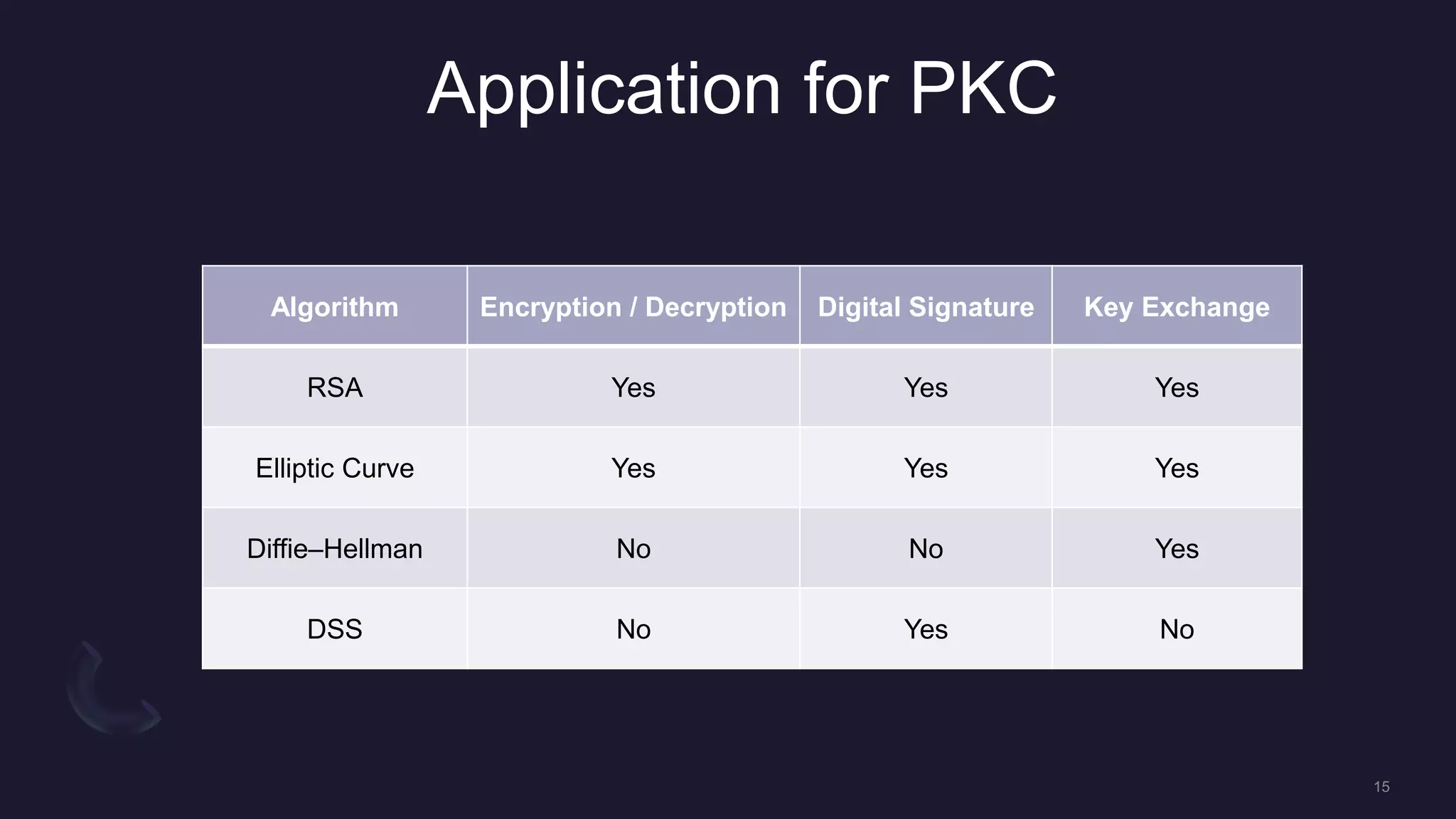This document provides an overview of public-key cryptography. It discusses how public-key cryptography uses two keys, a public key for encryption and a private key for decryption. The document outlines the key principles of public-key cryptography including key distribution and digital signatures. It also describes the basic public-key cryptosystem process and categories of public-key cryptography including encryption/decryption, digital signatures, and key exchange. The document concludes with requirements for public-key cryptography and examples of applications and cryptoanalysis techniques.
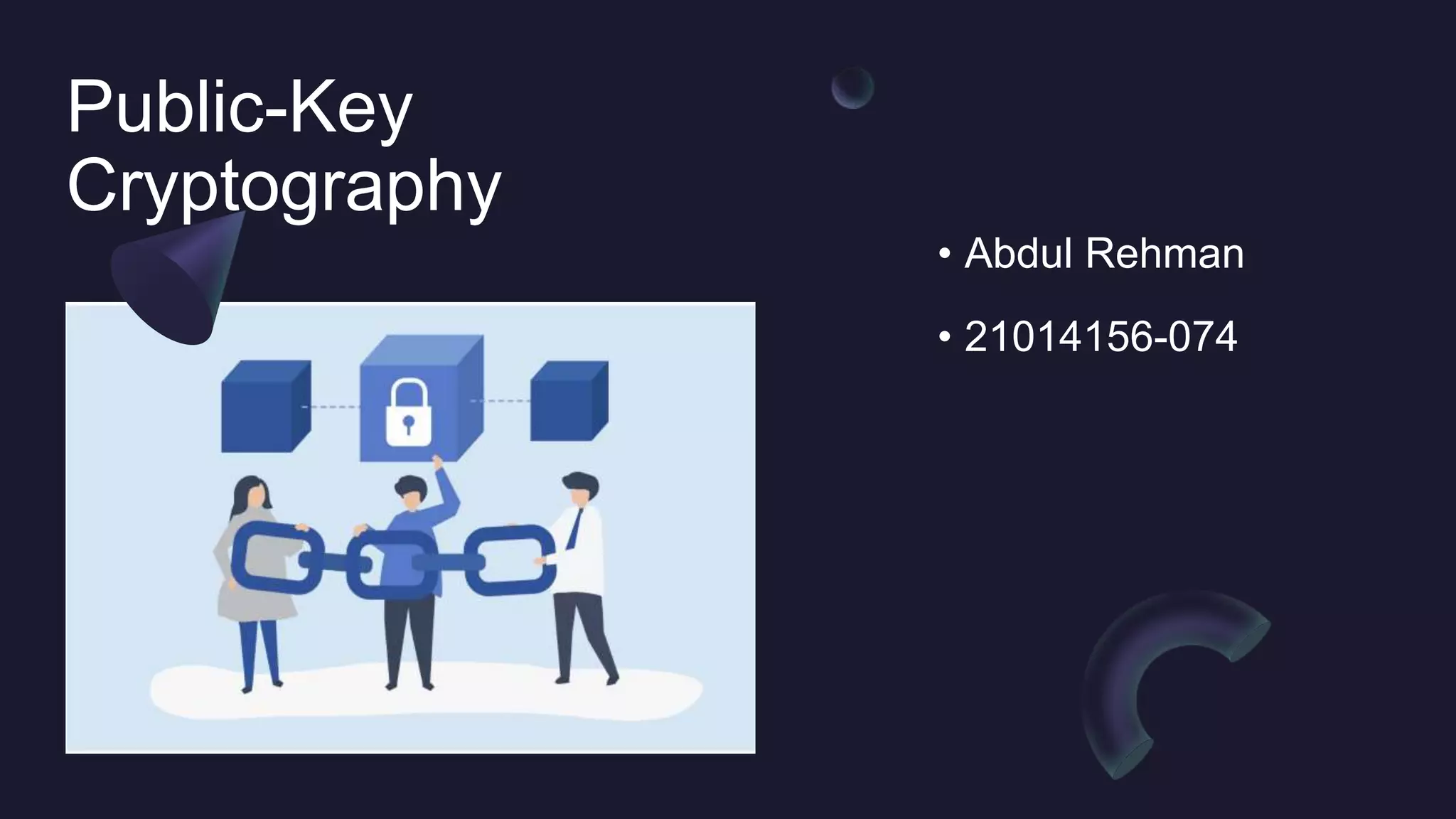

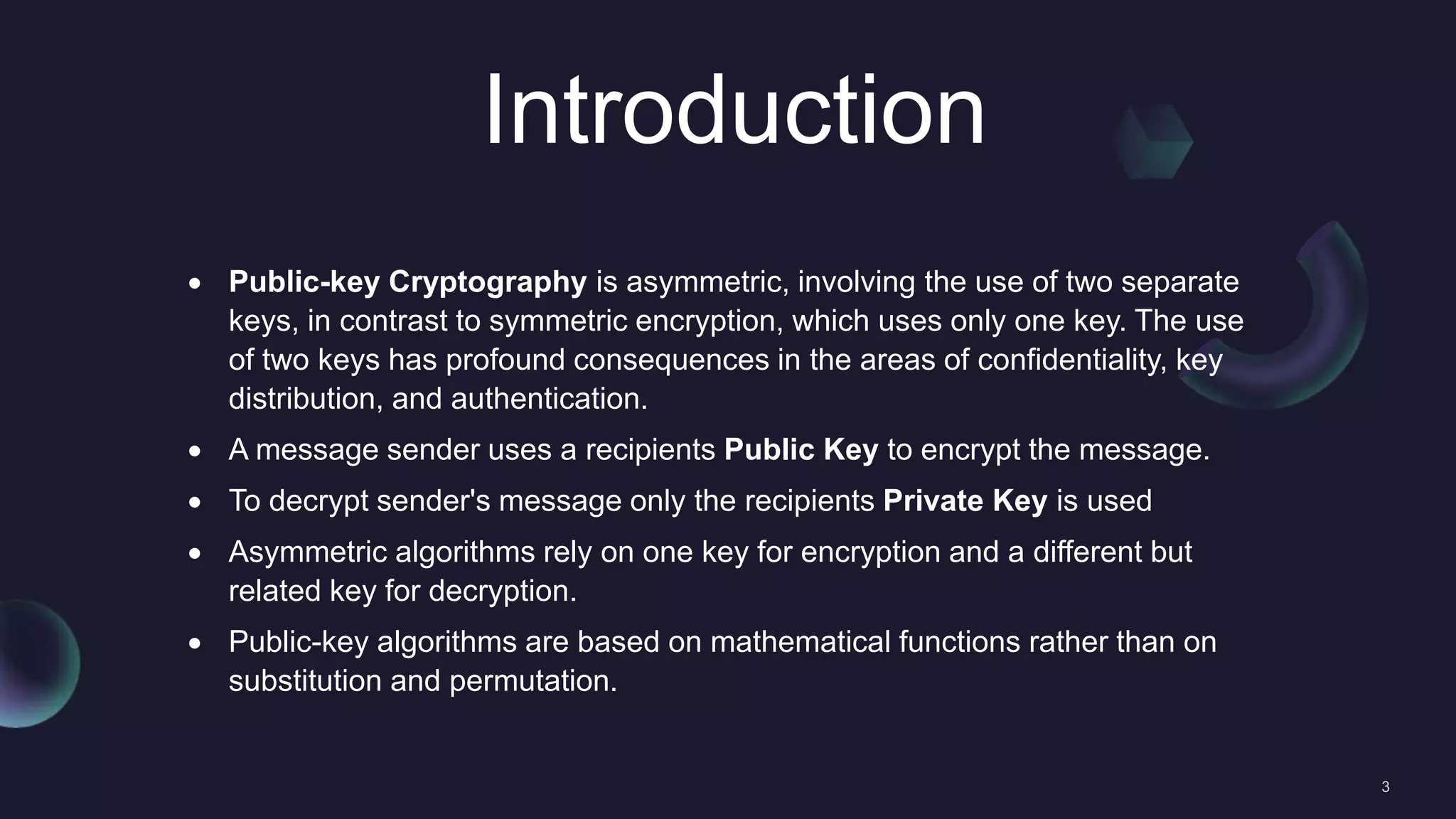



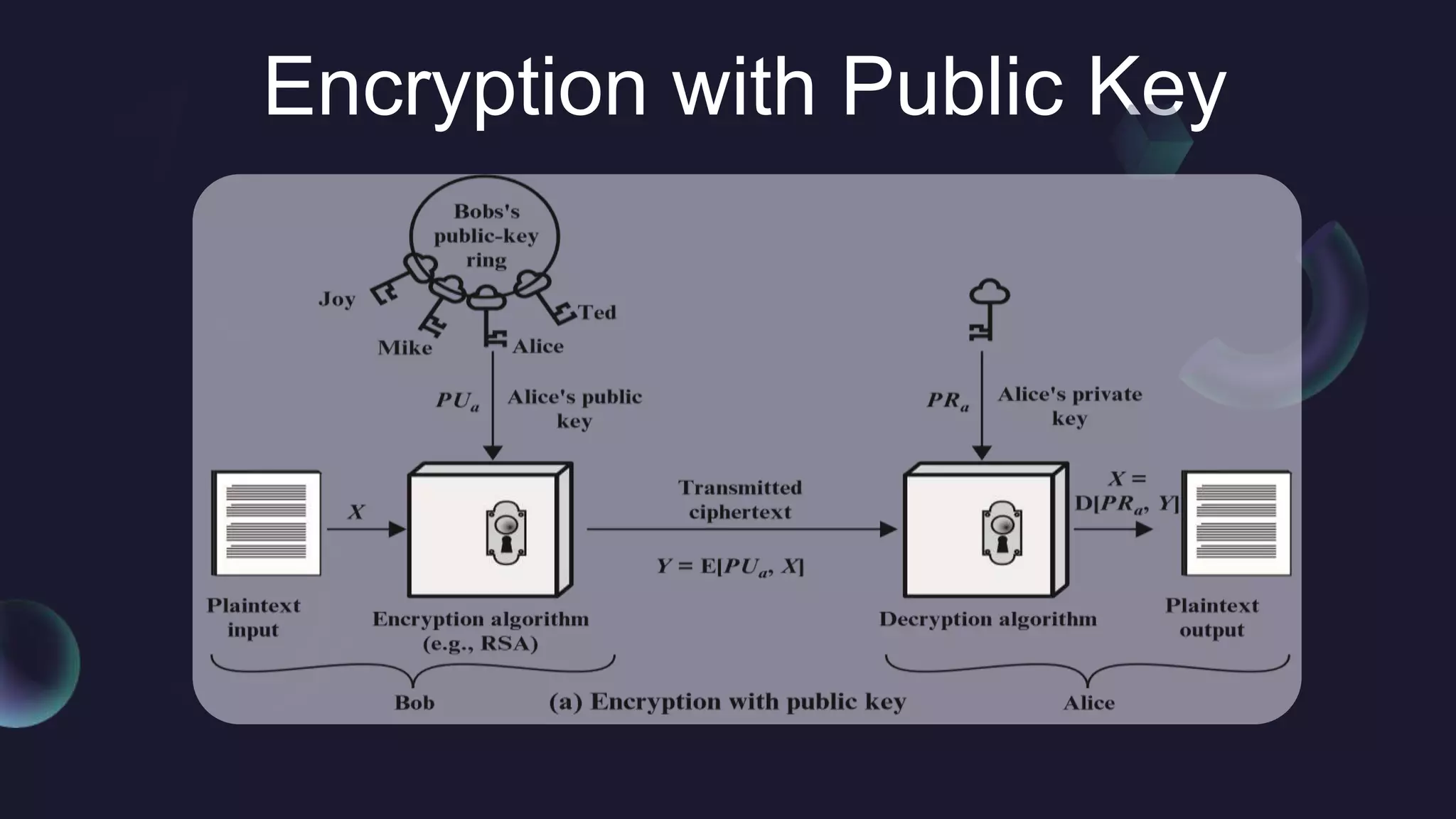

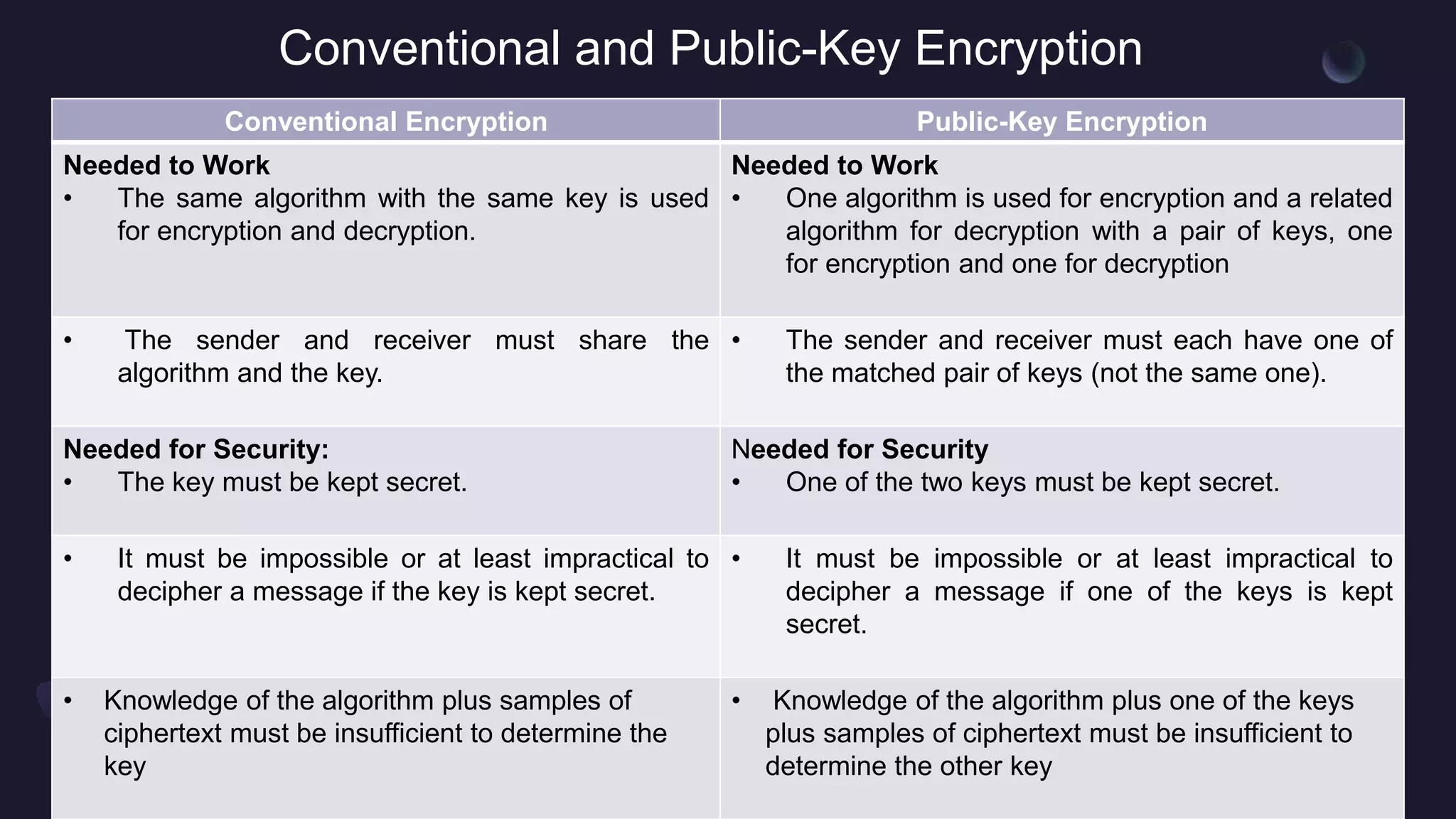


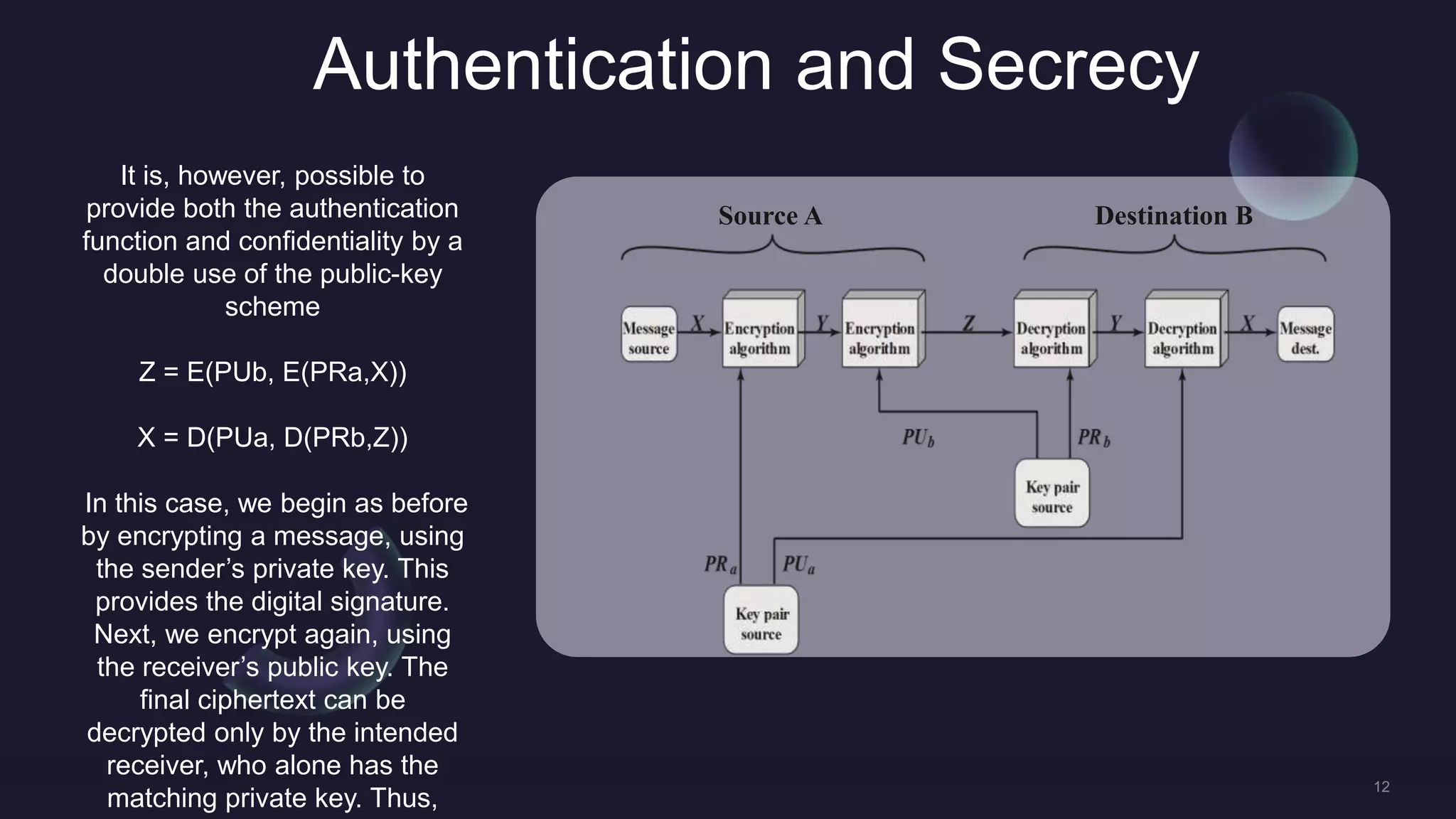

![Requirements for
PKC
1. It is computationally easy for a party B to generate a key pair (public key PUb, private key
PRb).
2. It is computationally easy for a sender A, knowing the public key and the message to be
encrypted, M, to generate the corresponding ciphertext: C = E(PUb, M)
3. It is computationally easy for the receiver B to decrypt the resulting ciphertext using the private
key to recover the original message: M = D(PRb, C) = D[PRb, E(PUb, M)]
4. It is computationally infeasible for an adversary, knowing the public key, PUb, to determine the
private key, PRb
5. It is computationally infeasible for an adversary, knowing the public key, PUb, and a ciphertext,
C, to recover the original message, M.
6. The two keys can be applied in either order: M = D[PUb, E(PRb, M)] = D[PRb, E(PUb, M)](https://image.slidesharecdn.com/public-keycryptography-230723185005-84fd73a2/75/Public-Key-Cryptography-pptx-14-2048.jpg)
